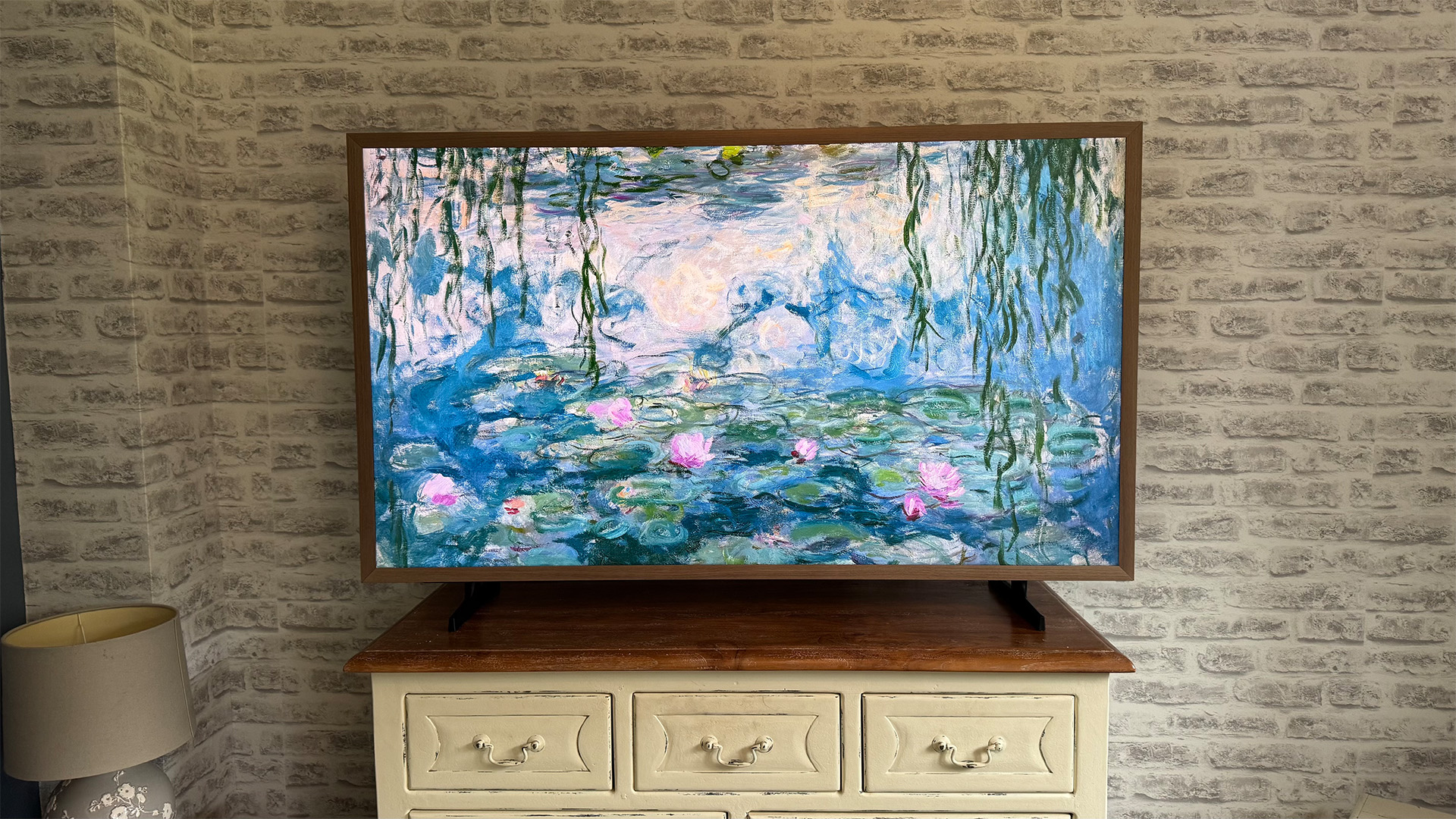What Hi-Fi? Verdict
Proof that good floorstanders can come in small packages, the Q Acoustics M40 are easy to set up and live with
Pros
- +
Smooth, safe sound
- +
Solid imaging, good timing
- +
Compact size
- +
Flexible with positioning
Cons
- -
Sound lacks dynamics and drive
- -
No wi-fi streaming
- -
No HDMI input
Why you can trust What Hi-Fi?
Q Acoustics refers to the M40 as a “powered micro-tower wireless audio system”. That’s quite the mouthful, but translated, what we are looking at is a pair of petite floorstanding speakers with Bluetooth, amplification and extra connectivity built in.
Now we know floorstanders, or “towers” as they’re more affectionately known, can be quite tall and dominate smaller spaces, but trust us when we say the M40 speakers are less Burj Khalifa (which is 830m tall) and more Blackpool Tower (158m). Standing just 71cm tall they are anything but imposing. It’s almost like they’ve shrunk in the wash, yet Q Acoustics has packed plenty inside for ultimate convenience.
Now, we’ve tested surround sound speaker packages with bigger centre channels but there’s something about a small compact floorstander which is hugely appealing. The question is, for all its flexibility and features, can these speakers deliver sonically?
Design

The Q Acoustics M40 builds on the company’s M20 desktop system, which we reviewed back in 2022 and to which we gave five stars.
The speakers are available in black, white and the walnut finish of our review sample. Even with two people present, we find the packaging a little fussy and it takes a bit of wrestling to set the speakers free.
Once they are out of the box you’ll need to attach a support base to the rear of each speaker and then screw in the supplied spikes. Each base takes the form of two wings that bolt into the speaker's underside. They add stability, but we could see them flexing slightly when moving the speakers around and experimenting with positioning.
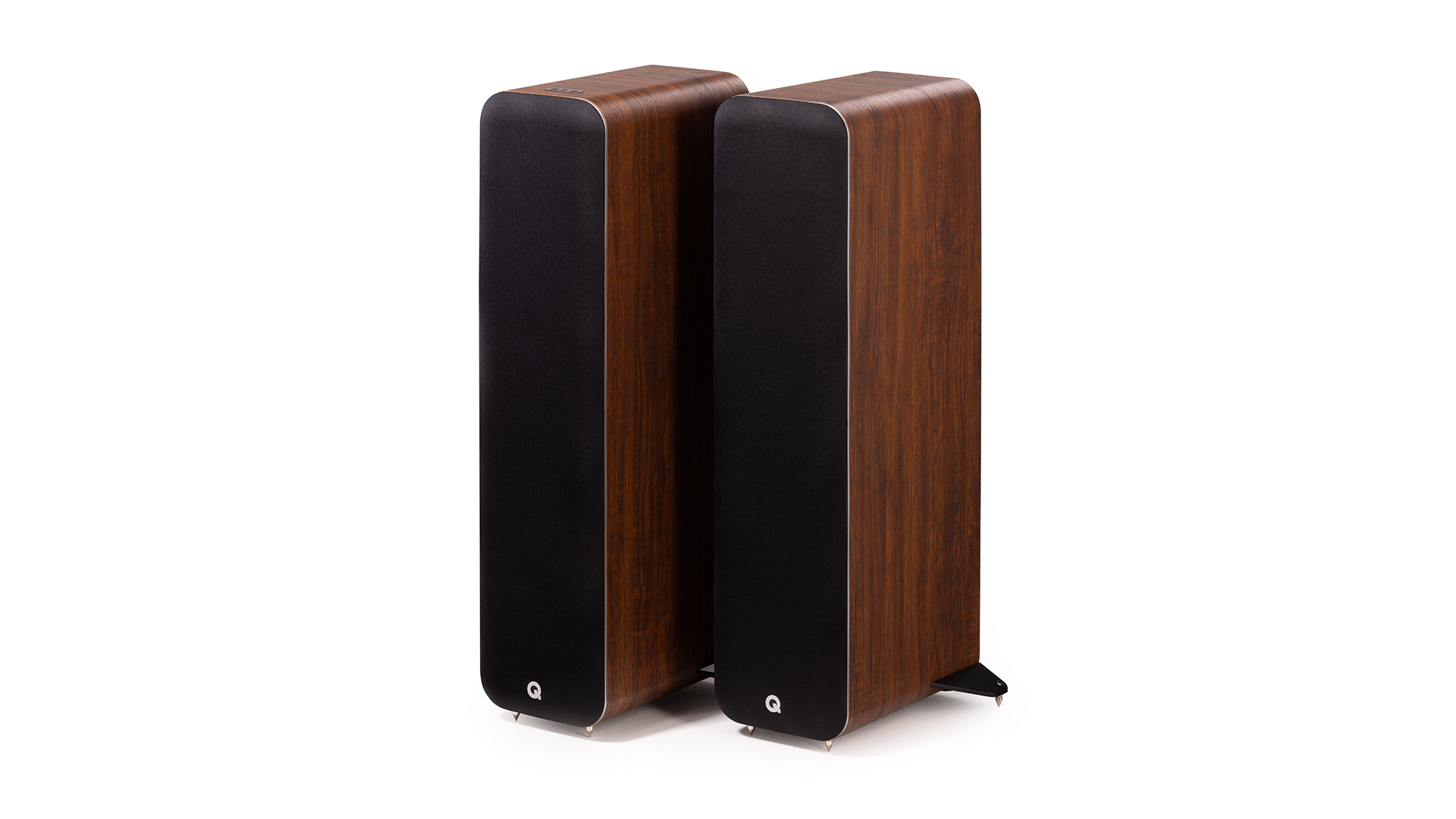
Cabinet type Two-way reflex ported
Power 2 x 100W
Bluetooth 5.0 (aptX HD, aptX Low Latency, SBC, AAC)
Wi-fi? No
Mains-powered or battery-powered Mains
Connections USB Type B, optical, stereo RCA, 3.5mm aux, subwoofer out
App? No
Dimensions (hwd) 71 x 25 x 29.6cm
Weight 11.8kg (passive speaker), 12.4kg (powered speaker)
Finishes Black, Walnut, White
You can’t take the grilles off the M40 but there’s a reason behind it. Q Acoustics claims that it brings added strength to the front baffle and reduces the amount of grille material around the drivers. This in turn minimises any effects on sound dispersion and reduces reflections.
If you could remove the grilles, you’d see a two-way speaker design, with twin 12.5cm mid-bass drivers positioned beneath a 22mm tweeter. The mid-bass drivers use Q Acoustics’ C-cubed Continuous Curved Cone design, which first appeared in the Q Acoustics 5000 Series (we have already given five stars to the 5040 and 5050 floorstanders from the range).
To help with imaging, Q Acoustics has positioned the tweeter right near the top of the baffle and the unit has been designed to promote wide dispersion. The DSP used in the speakers has also been adjusted to make the speakers more flexible in terms of positioning, so even if your seating arrangement has your ears sat above the top of the speakers, the stereo image performance isn’t negatively impacted.
Inside each rear ported cabinet is the company’s Point to Point (P2P) internal bracing which aims to keep the speaker as rigid as possible and minimise unwanted cabinet resonances.
Features
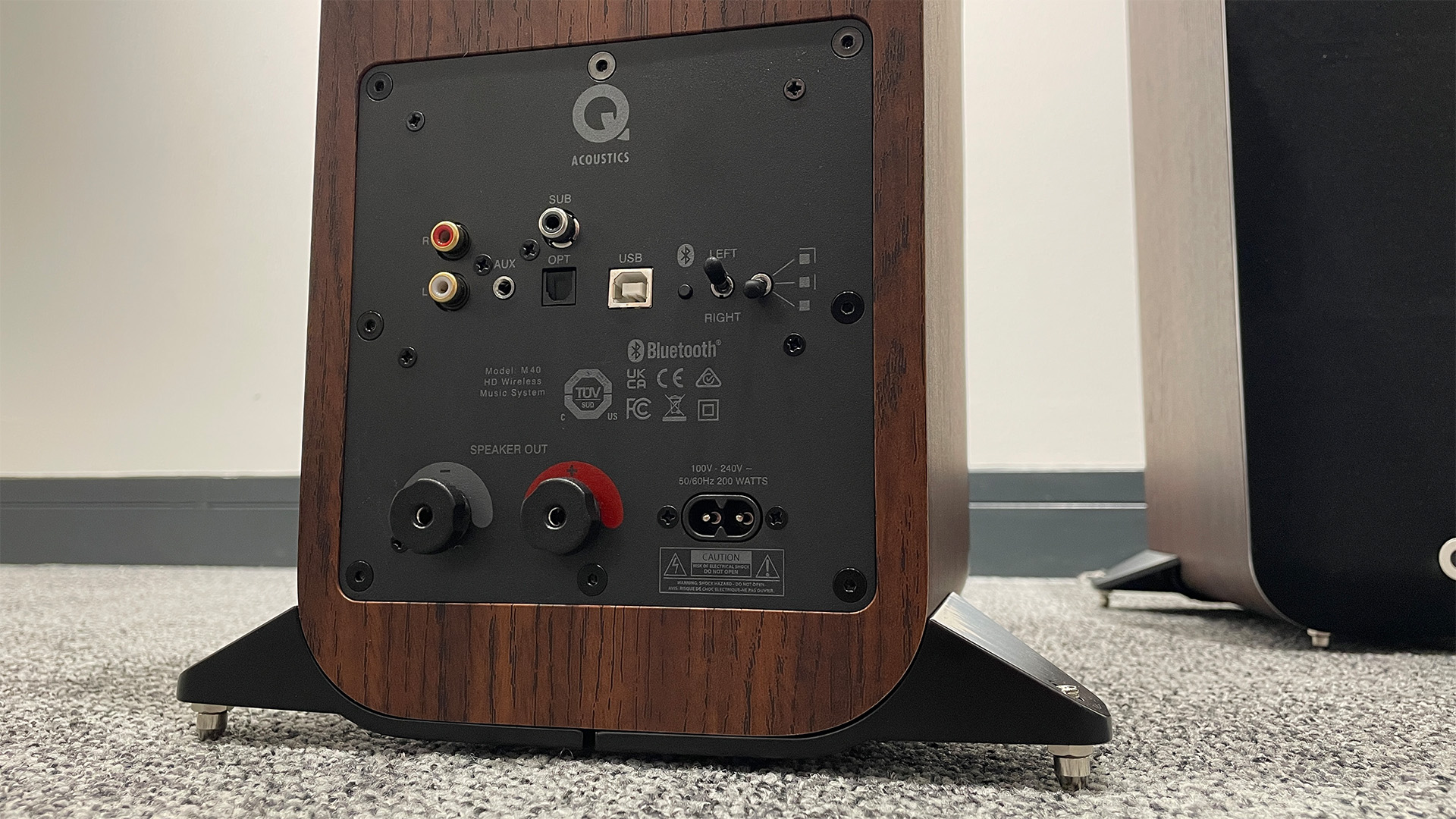
One of the speakers works as the master and can be designated the left or right speaker depending on where your nearest power socket is situated.
And it’s the master that hosts the amplification (2 x 100W), all the inputs and the switchable EQ which is designed to help with positioning. The master connects to the partnering speaker with a conventional speaker cable.
In the box you also get a small wand of a remote about the length of a ballpoint pen and the width of about three. You can use it to mute, pause/play, change volume, skip track and switch inputs. During testing we found all buttons quick to respond, bar the volume buttons which seem hesitant at times.
The power button on the top of the master speaker has an LED surround which lights up a different colour depending on the source you’re using, although we can’t help but feel that LED might be better positioned on the front of the speaker as it’s hard to see when sat down. The same power button is also flanked by matching volume control buttons.
There’s no wi-fi connectivity for the Q Acoustics M40 so your wireless streaming is purely via Bluetooth 5.0, but there is aptX HD and aptX Low Latency support (up to 24-bit/48kHz resolution).
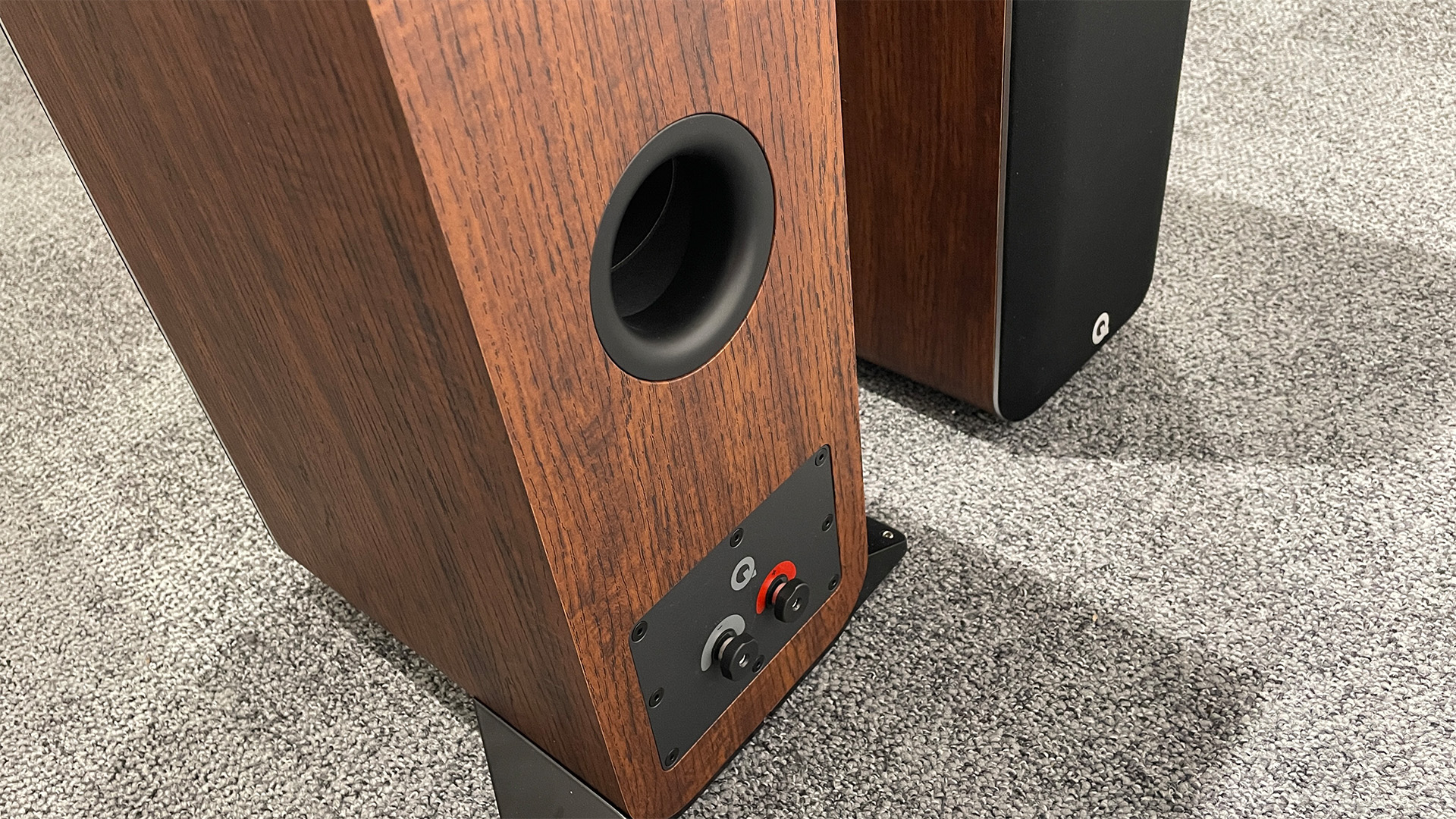
Physical connections are there too: you can use the analogue input to connect a CD player, or, assuming it’s running through a phono stage, a record player. Not that you’re likely to need extra bass, but there’s a subwoofer output included too.
Laptops can be connected to the USB Type-B socket which supports 24-bit/192kHz hi-res audio. The USB socket sits next to an optical digital input should you want to connect a TV, although we’re surprised and a little disappointed that there’s no HDMI socket, especially as optical connections are appearing less and less on modern TVs.
To help you with positioning, there’s a toggle switch on the rear of the master speaker with three different settings to pick from depending on where in your room you’ll be placing the speakers. There’s a setting for in the corner of a room, one for close to a rear wall and another for when the speakers are used in free space.
In our test rooms we experiment with all three, manoeuvring the speakers around to hear how they sound in different places with the switch in different positions.
We settled with the speakers about 55cm from the rear wall, slightly toed in and in their against-a-wall EQ setting. We find the free space setting injects a little too much bass into the sound.
We also experiment with the gap between the speakers, which does impact the soundstage. Too wide apart and we find it breaks down and loses focus, so we settle on having them 1.8m apart and toed-in slightly. This gives the stereo image greater focus and solidity in our room.
Sound

We start by rocking out to a stream of Slither by Velvet Revolver from a MacBook Pro straight into the Q Acoustics’ USB socket. The M40 delivers a composed and controlled sound and there’s just enough energy and vibrancy to the electric guitar and drums to get your toes tapping away.
Stereo imaging is great – each element has its own space to sit in but there’s a great sense of cohesion too. And, even if your seating position sees your ears above the tops of the speakers, you still get a solid and neatly spaced image.
Over prolonged listening, it’s apparent the M40 isn’t hugely demanding of the quality of your source, which is a good thing. Heavily compressed or poorly produced tracks aren’t punished, which leaves you free to enjoy the sound that comes from those dinky cabinets.
The same track played over Bluetooth confirms our suspicions that it’s a slight step down from using the wired connection both in terms of clarity and resolution, but the Q Acoustics’ unfussy character still makes the most of what they are being served.
There’s a good level of overall detail, but the speakers don’t give you the impression that analysis and insight are right at the top of their list of priorities. They peel back just enough layers of the music to make it sound interesting but fall short of cutting-edge insight.
We don’t find ourselves rushing to hear what the next song in our playlist sounds like, although we’re more than happy to have the speakers bopping away in the background. This is because during testing we don’t find any aspect of the sound quality grating.
Highs don’t sound harsh or abrasive and bass is weighty enough for you to feel its impact, but it's also well-controlled. We slip on Kid Cudi’s Pursuit Of Happiness, and the speakers immediately switch into swagger mode. They do a good job of capturing the tune’s powerful yet lazy bassline, balancing the weight and depth of the bass notes with the splashes of percussion. There’s a good sense of expression around the lead vocal and the backing vocal that overarches the track.
We finish with a spot of classical music in the shape of End Credits from Pirates Of The Caribbean: On Stranger Tides. The Q Acoustics roll along with a good sense of speed, and again it’s all very well controlled and hugely listenable. We’d like the dynamics on display to reflect more of the swashbuckling and dramatic nature of the track, but it’s still extremely listenable. There’s rise and fall, but we’d like a bit more range between the two.
Verdict
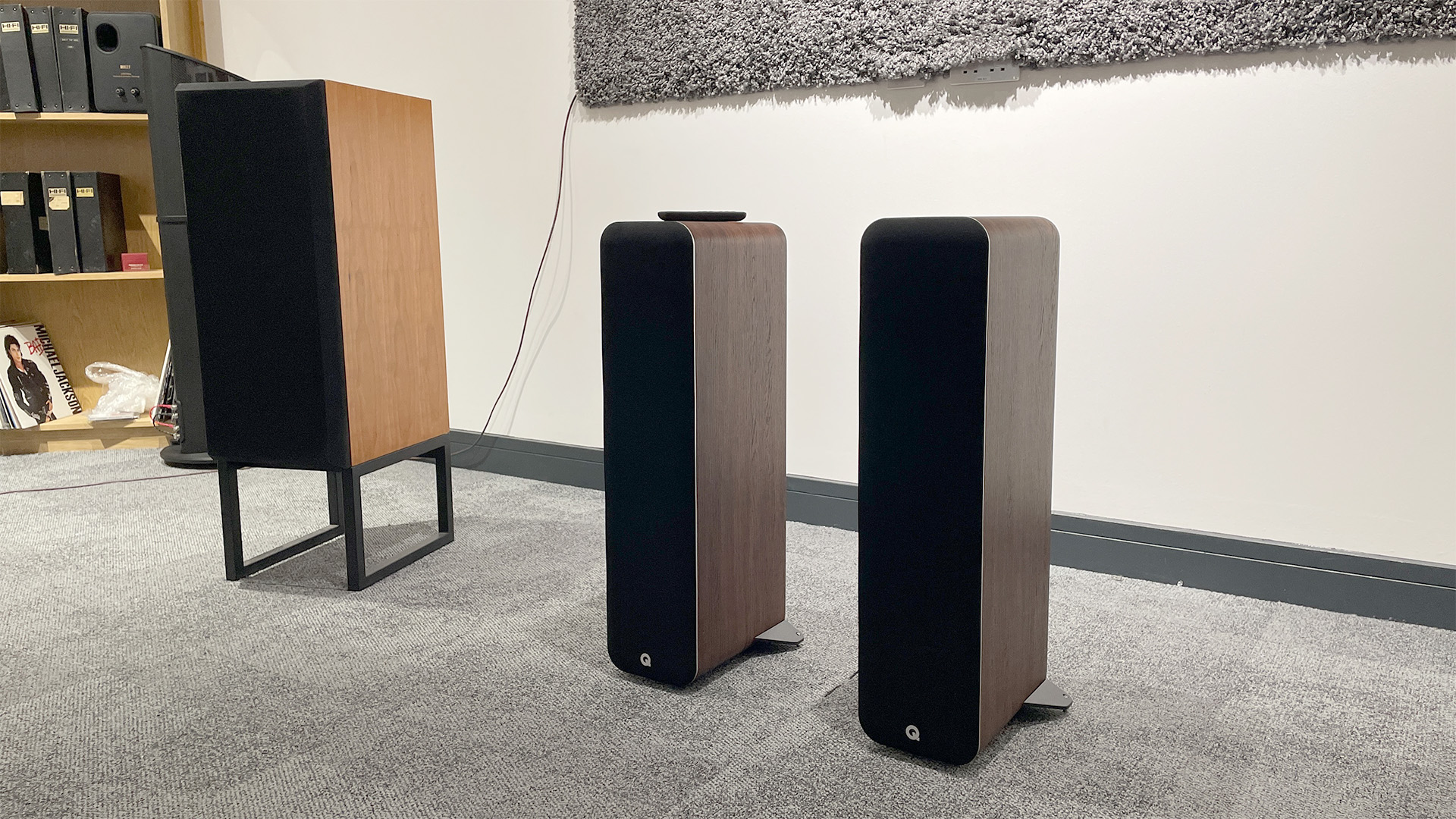
If you want a speaker system that’s flexible, undemanding and easy to get along with, then the Q Acoustics M40 won’t disappoint. They’re a safe recommendation, from their sound to their small, unobtrusive form and they can fit into places where larger floorstanders might fear to tread.
But we do think they’re a bit safe-sounding in terms of dynamics and not quite as revealing or captivating as we would hope. A good speaker system that most people could easily live with, but not a great one.
SCORES
- Sound 4
- Build 5
- Features 4
MORE:
Read our review of the Q Acoustics M20
Also consider the Elac Debut ConneX DCB41
Besthi-fi speakers tested by our expert reviewers
Best active speakers: our experts pick the top pairs with built-in amplifiers
What Hi-Fi?, founded in 1976, is the world's leading independent guide to buying and owning hi-fi and home entertainment products. Our comprehensive tests help you buy the very best for your money, with our advice sections giving you step-by-step information on how to get even more from your music and movies. Everything is tested by our dedicated team of in-house reviewers in our custom-built test rooms in London, Reading and Bath. Our coveted five-star rating and Awards are recognised all over the world as the ultimate seal of approval, so you can buy with absolute confidence.


